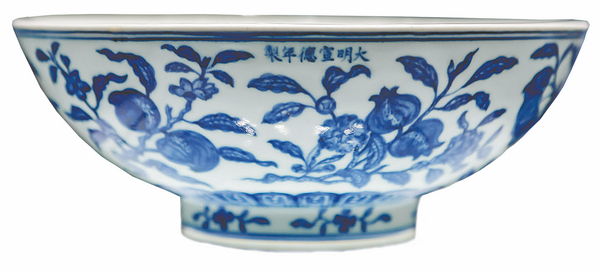

Objects on show are from the collection of the Jingdezhen Imperial Kilns Museum, in Jingdezhen, and private assemblies in China, Europe and Asia, and together they illustrate the booming production of qinghua ceramics and its role as an ambassador, linking ancient China with the world in terms of trade, art and culture.
Yuan-era ceramics on show exhibit a variety of shapes, forms and motifs of qinghua art, such as the yuhuchun (literally "jade bottle of spring") vase, a pear-shaped bottle that has a flared rim and a low straight foot. And there are "plum "vases, of which the small, narrow rim would remind users of the thin branches of a plum tree. Also on show are the high-foot cups that reflect the lifestyle of nomadic tribes on the grasslands. The decorations include phoenixes, human figures, birds, insects, plants and geometric motifs, showing both Chinese cultural traditions and influences from overseas.
Highlights on display include a Yuan-era porcelain flask, featuring a phoenix head-shaped mouth and patterns of phoenixes and peonies.
Li says similar objects can be found in the collection of the Capital Museum in Beijing and among artifacts excavated from an ancient site in the Xinjiang Uygur autonomous region in 1998.
"The flask's mouth is delicate but well-preserved, and the colors and coating exemplify the creamy, fine texture of Yuan qinghua ceramics," he adds.
The exhibition ends on Saturday.
linqi@chinadaily.com.cn